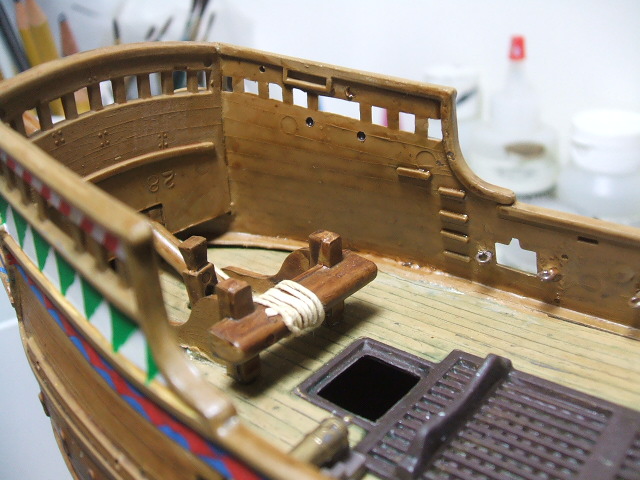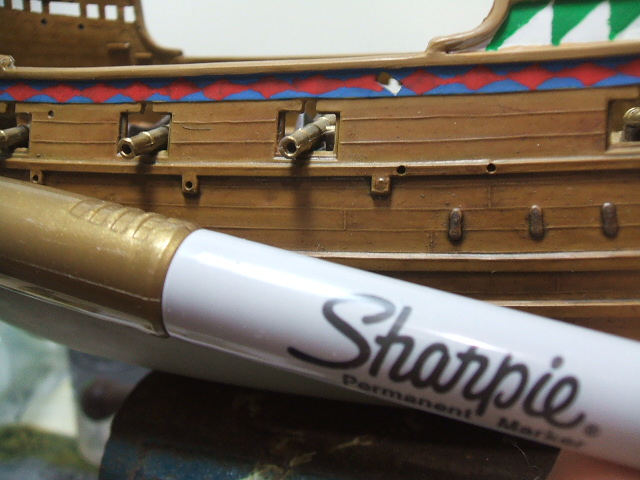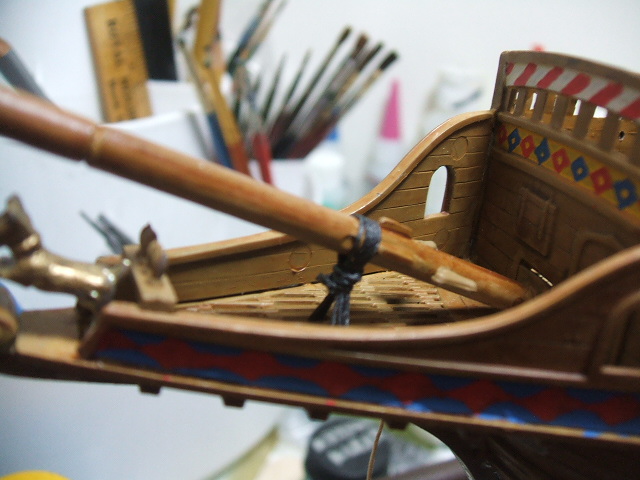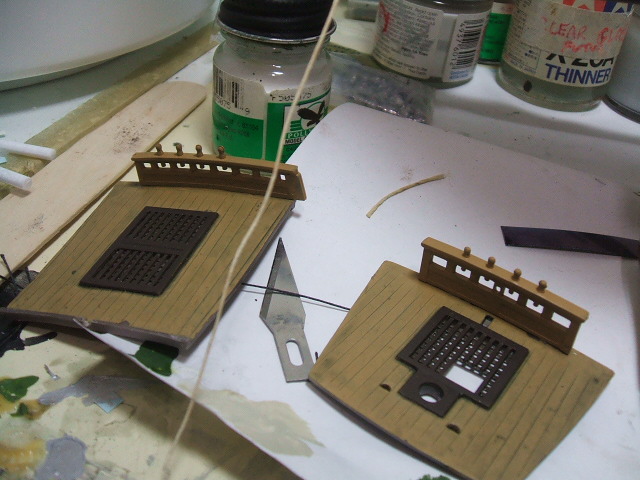
Slow and Steady
I’m not sure if I should call this a “demo build.” It doesn’t really fit the profile because I may decide to abandon it at any time. You see, I put this model aside nearly two years ago. It may go back on the “delayed” list if I get too tired of it.
Because that’s the potential problem–fatigue. I just get tired of working on the same model forever and ever and ever. And these ships are slow going for me. I have to read the instructions, and interpret them, and then try to figure out what I’m doing. It’s not like an airplane kit where I “just know” what to do (and hope I do, in fact, know). It’s a job, and it can become “no fun” pretty fast.
But right now I’m in the second honeymoon stage. I’m finding a lot to like about this thing, just as I felt when I first decided to build it. Who knows? I might just complete it on this go-around.

Painting is always an issue. Spraying any old kind of paint makes things easy. Not being able to do that makes it difficult. For example, I decided that the cannons should be “brass.” I don’t know if ANY of this is “historically accurate” but who cares. Brass, though, is a tough color to paint in acrylic with a brush. Enter the “gold” Sharpie. This little baby puts on a “brass” finish like nobody’s business. It is a bit delicate, until it really “sets,” but if any of it rubs off I can touch it up.

I added this string thing to the poiny-out hit you in the eye part. Cool!

I also strung an anchor rope (rope?) and painted these rails. The base color for most of the ship (not the deck) is RLM 79 from Polly Scale. The base color for the deck is, I think, that Israeli beige color they paint everything in.

I don’t know if that’s enough rope for an anchor or not. I’m just copying the pictures in the instructions, which are excellent by the way. Good old Revell. Can’t beat them for sailing ships.
The anchor rode, the chain or cable (regardless of what it’s made of) that goes from the anchor to the ship, is typically very long and quite thick as it has to be very strong. For your model, what you see around the attachment point is the bitter end. If the anchor were fully played out, that remains as it is how the anchor rode attaches to the ship: wrapped and secured to a very thick and strong framework, the verticals go down as far as the keel and the horizontals go forward to brace against the stem.
The great majority of the rode is below decks where there is likely a winch that uses human power to raise the anchor.
Wouldn’t they be using a chain, rather than a rope for the anchor? I know absolutely nothing about sailing ships and I admire your bravery in takng this on.
Johnnyb
I know it’s hard to believe, but it took me nine months to get the point where I finally put the model aside for a while. Now that I’ve gone back to it (after a two year hiatus) I have a different attitude. I’ve decided that in order to “expedite” this build I’ll take shortcuts whenever I can. I spent a lot of time over at the Fine Scale Modeler ship forum, and what I saw there caused me to set unreasonably high expectations for myself. Now I know better. Is the anchor rope correct? Hey, I’m not ever sure it IS an anchor rope! LOL! As we say in the Air Force, “anchors away!”
Yeah. I’ve had builds languish for a while. Eventually, you look at it and realize how much time .. and sometimes, money … you have invested and it is still in the box! Sometimes you just need to “Git ‘er done!”